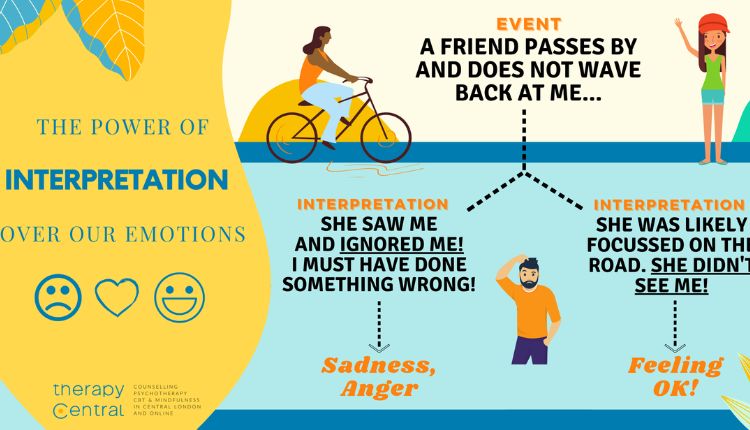If you or someone you care about is struggling with excessive worry, tension, or panic, you may have heard about CBT for anxiety as a promising treatment. In this post, we’ll walk through what CBT is, why it’s effective for anxiety, key techniques, who can benefit, and how to take the next step (including a link to a trusted resource right away).
What Is CBT, and Why Is It So Effective for Anxiety?
CBT stands for Cognitive Behavioral Therapy. It is a structured, evidence-based psychotherapy that combines two core parts:
- Cognitive – examining and reframing distorted or unhelpful thoughts
- Behavioral – gradually changing behaviors to reduce avoidance and anxiety
CBT is among the most well-researched psychotherapies, and among its strongest evidence is in the treatment of anxiety disorders.
Anxiety is maintained by certain processes: negative automatic thoughts, cognitive distortions, and avoidance behaviors. Rather than dwelling on the origins of anxiety, CBT typically focuses on what keeps the anxiety alive now and addresses those patterns directly.
Because it is skill-based and time-limited, clients often begin to change their emotional responses and daily functioning within weeks to months.
Common Types of Anxiety That Respond to CBT
CBT is versatile and has been shown effective across many anxiety diagnoses, including:
- Generalized Anxiety Disorder (GAD)
- Panic Disorder (with or without agoraphobia)
- Social Anxiety Disorder
- Specific Phobias
- Obsessive-Compulsive Disorder (OCD) and PTSD often use CBT principles (though with specialized adaptations)
Because the mechanisms of distorted thinking and avoidance appear across many anxiety types, CBT’s core techniques can be adapted accordingly.
How CBT for Anxiety Actually Works: Key Techniques
Here are the central techniques therapists (and guided self-help) employ in CBT for anxiety:
1. Psychoeducation & Socialization
Early in therapy, the client and therapist map out how anxiety works (triggers, thoughts, behaviors). Clients learn the CBT model and what to expect. This step is sometimes called socialization — helping the client understand the logic of CBT.
2. Identifying Automatic Thoughts & Cognitive Distortions
People with anxiety often have rapid, automatic thoughts that exaggerate threat or danger. Common distortions include:
- Catastrophizing (“If this happens, it’ll be a disaster”)
- Overgeneralization (“Everything always goes wrong”)
- Mind reading (“They think I’m stupid”)
- Emotional reasoning (“I feel anxious, so it must be dangerous”)
- All-or-nothing thinking (“If I don’t do it perfectly, I fail”)
Clients learn to label these distortions and treat them as hypotheses to test rather than facts.
3. Cognitive Restructuring / Thought Records
Clients use structured worksheets or thought records to slow down, examine evidence, and create more balanced or realistic alternative thoughts. They may ask:
- What evidence supports this thought?
- What evidence contradicts it?
- Is there a less extreme way to interpret the situation?
- What would I say to a friend in this position?
These tools allow gradual change in thinking patterns.
4. Behavioral Experiments & Exposure
Avoidance is a hallmark of anxiety, and safely confronting feared situations (gradually) is a core tool. Clients may set up behavioral experiments to test fearful predictions (e.g. “If I speak up, they’ll think I’m incompetent”).
Exposure work might be in vivo (real life), imaginal (in the mind), or interoceptive (bodily sensations). Over time, repeated exposure “disconfirms” catastrophic predictions and builds tolerance.
5. Relaxation & Anxiety Management Skills
Although CBT is more than relaxation, therapists often teach:
- Deep (diaphragmatic) breathing
- Progressive muscle relaxation
- Mindfulness or grounding techniques
- Guided imagery
These help reduce the intensity of physiological arousal and give clients tools to calm themselves in the moment.
6. Relapse Prevention & Skills Generalization
Near the end of therapy, clients consolidate gains, rehearse handling setbacks, and plan for using CBT tools independently in future stressors. The goal is for the client to become their own therapist over time.
Realistic Outcomes: What Can You Expect?
CBT for anxiety has a strong track record:
- In randomized controlled trials, CBT consistently outperforms placebo and non-specific therapy for anxiety disorders.
- Gains often persist over time; follow-up studies show benefits lasting 6–12 months (or longer) after treatment ends
- Many clients begin to notice symptom relief in as few as 8–12 sessions, though full work may take 12–20 or more sessions, depending on severity.
- Because CBT is skills-based, clients often continue applying techniques on their own, preventing relapse
CBT is not a magic bullet: success depends on client engagement, homework compliance, and therapist quality. But when done well, it can produce meaningful and lasting change.
Who Can Benefit — And Who Should Be Cautious?
Ideal candidates for CBT for anxiety include:
- Clients motivated to learn new mental tools
- People with moderate to mild anxiety (though it also works for more severe cases)
- Those willing to do homework, experiments, and exposures
Considerations / limitations:
- Clients in crisis, with severe comorbidities, or active substance misuse may require additional support or integrated treatment.
- Some clients initially resist exposure tasks or find cognitive work challenging — pacing, support, and compassionate guidance are key.
- CBT requires active participation; passive expecting “therapy will fix me” is less likely to succeed.
In many clinical settings, CBT is combined with medication when needed; but for many patients, CBT alone (or with light pharmacotherapy) is sufficient.
Tips for Using CBT Techniques in Daily Life
Here are some practical pointers for clients (or readers) to experiment with CBT techniques between sessions:
- Start a Thought Log
Record triggering situations, automatic thoughts, emotional ratings, and alternative thoughts. Over time, you’ll spot patterns.
- Test Beliefs with Experiments
If you believe “If I speak up, they will laugh at me,” try a small exposure: ask a question or make a comment in a safe environment. See what happens.
- Break Avoidance into Small Steps
Use a graded exposure ladder. Don’t leap into the most challenging scenario immediately.
- Use Relaxation Strategically, Not Reliantly
Use breathing or muscle relaxation when anxiety peaks, but avoid using them to completely avoid addressing the anxiety source. Use them as aids—not as avoidance.
- Schedule “Worry Time”
If worries intrude, delay them to a set 10–15 minute block each day. This paradoxical technique helps limit rumination.
- Review Progress Regularly
Every week, assess which techniques helped, where you got stuck, and plan next exposures or cognitive challenges.
- Build Self-Compassion
Change takes time. Encourage self-kindness and realistic expectations.
How to Choose a Quality CBT Provider
When looking for a therapist or clinic, consider:
- Training & Credentials: Look for therapists trained specifically in CBT or evidence-based anxiety treatment.
- Session Structure: A good CBT therapist uses structured sessions, assigns homework, and tracks progress.
- Fit & Rapport: You need trust and comfort with your therapist to tackle fears.
- Transparency & Monitoring: The therapist should discuss goals, progress, and plans transparently.
- Integration & Coordination: For those with medical or psychiatric needs, coordination with other providers is helpful.
Because CBT for anxiety is fairly well standardized, you can often ask prospective therapists how they approach exposure, cognitive restructuring, and relapse prevention. If their answer aligns with evidence-based practice, that’s a positive sign.
Final Thoughts & What to Do Next
If anxiety has been limiting your life—interfering with work, relationships, sleep, or well-being—CBT offers a pathway toward lasting change. It is not a passive therapy; it asks you to become an active participant in your own mental health.
As a next step, I recommend:
- Visiting the CBT resource provided at the top: CBT for anxiety
- Scheduling a consultation with a CBT-trained therapist
- Trying out a simple thought log or exposure experiment today






